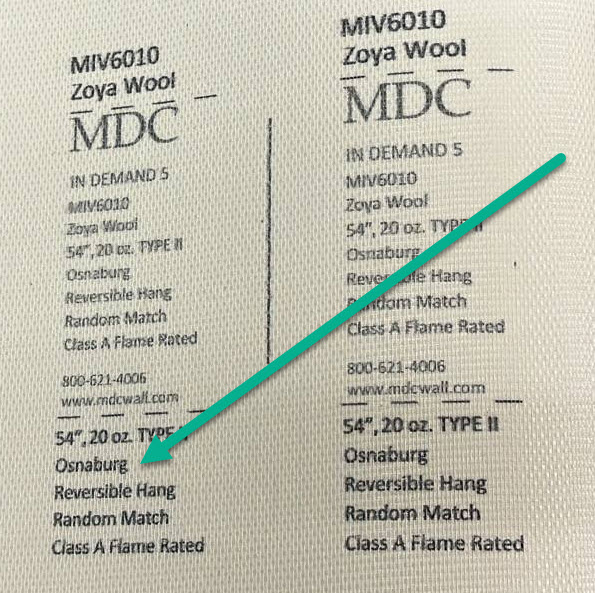Osnaburg backing refers to the type of material on the back of wallcovering, and today the term specifically applies to Type II wallcovering. The fabric of osnaburg is always woven, making it stronger and more durable than more traditional wallcovering backing. It can come in several different types and blends.

Quick History
The original wallpapers were actually composed of linen and fabric, usually thinner than what was used to upholster furniture. It was adapted into a kind of vinyl wallcovering later that ended up being a relatively poor type of wallcovering because it did not hold its position. Over time, it would go back to the original shape that it had, creating gaps between the covering, floor, ceiling and the different strips.
The small town of Osnaburg, Germany was where this problem was finally resolved. They selected a film that had less flexibility for the front and a woven fabric from their town to add to the back. The material was used in a lot of other items, particularly clothes. While it was very coarse, that was perfectly fine for the backing of wallcoverings since the feel was not exposed next to the skin.
Primary Benefits
One of the reasons this kind of wall backing is so popular is because it offers a number of solutions to traditional wallpaper problems.
- When the right fabric is used, it can absorb the adhesive better, creating a more reliable bond between the wallcovering and the wall.
- Type II is very strong and durable, and that is primarily because of the osnaburg backing used on so many of the different wallcoverings in the type.
- Osnaburg backing is exposed to higher temperatures during the manufacturing process to ensure their dimensions do not significantly change over time. This means that it is will retain the shape and length when you apply it to the wall.
Material Used
While the original osnaburg backing was always 100% cotton, this proved to be difficult to apply because it was very heavy. Over time, different materials were used, particularly polyester. Polyester was not only lighter, but helped to reduce the cost of the wallcovering. However, it was not nearly as durable or strong. Today, most osnaburg backings use a cotton and polyester blend to get the benefits from both materials.
Conclusion
The type of backing on wallcoverings has changed and evolved over time. While it is certainly still possible for wallcoverings to peel and crack, these are far more minor issues compared to what used to happen to wallcovering over time. Osnaburg falls in the middle of the spectrum in terms of strength and weight, which is why it is a Type II wallcovering. It can withstand a lot of abuse without losing its adhesion to the wall.